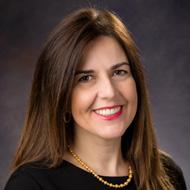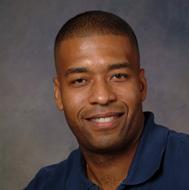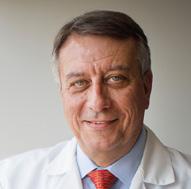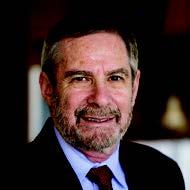January
- Resistance of SARS-CoV-2 Omicron Variant to Neutralization by Vaccine-Elicited and Therapeutic Monoclonal Antibodies
- Dr. Nathaniel Landau, Professor, Department of Microbiology, NYU Grossman School of Medicine
- Translating Greek Letters into Clinical Efficacy: EVUSHELD Activity against Variants of Concern
-
Dr. Katie Streicher, Head of Translational Medicine in Vaccines & Immune Therapies, AstraZeneca
-
- The SARS-CoV-2 WHO International Standard and Reference Panel: Replacement Programme and the Challenge with Variants
- Dr. Mark Page, Principal Scientist and Head of Emerging Viruses Group, Division of Virology, National Institute for Biological Standards and Control (NIBSC)
- WHO Standards for Evaluation of the Immune Response to COVID-19 Vaccines
- Dr. Ivana Knezevic, Scientist, Technical Standards and Specification Unit, and Group Lead, Norms and Standards for Biologicals, WHO/MHP/HPS
- Centralized Laboratory Network for Measurement of Immune Responses Elicited by SARS-CoV-2 Vaccines
- Dr. Arun Kumar, Preclinical Vaccines Development Lead, Coalition for Epidemic Preparedness Innovations (CEPI)
December
- Update on USG Supported COVID Vaccine Trials
- Dr. Mary Marovich, Director, Vaccine Research Program, Division of AIDS, NIAID
- An Update on the Serologic Responses to COVID Vaccines in Children
- Dr. Kathryn Edwards, Sarah H. Sell and Cornelius Vanderbilt Professor of Pediatrics, Vanderbilt University Medical Center
- Vaccine Boosted Plasma: The Use Case in Immune Suppressed Patients with Smoldering COVID
-
Dr. Michael Joyner, Department of Anesthesiology & Perioperative Medicine, Mayo Clinic
-
Dr. Liise-anne Pirofski, Chief, Division of Infectious Diseases, Albert Einstein College of Medicine and Montefiore Medical Center
-
November
- A Population-Based Threshold of Protection for COVID-19 Vaccines
- Dr. David Goldblatt, Professor of Vaccinology and Immunology, University College London
- A Needle-free, Adjuvant-free, Bacteriophage T4 Platform for Rapid Design of Multivalent Vaccines Against SARS-CoV-2 and Pandemic Pathogens by CRISPR Engineering
- Dr. Venigalla Rao, Professor of Biology, The Catholic University of America
October
- Clinically Relevant Biomarkers of Disease Severity: What do we know?
Multiple Independent Risk Factors for Post-Acute Sequelae from COVID-19
- Dr. Jim Heath, President and Professor, Institute for Systems Biology
Immunophenotyping Assessment in a COVID-19 Cohort
- Dr. Patrice Becker, Section Chief, Asthma and Airway Biology, NIAID
Using AI to Help Predict the Likelihood of Progression to Severe Disease in COVID-19 Patients
- Mr. Jamie Gramz, Head of Digital Applications, Siemens
- Dr. Raj Gopalan, Chief Medical Informatics Officer, Siemens
- Immune Responses to SARS-CoV-2 Vaccination in Myeloma – An Update
- Dr. Samir Parekh, Hematology-Oncology and Oncological Sciences, Mount Sinai
- Heterologous COVID-19 Booster Vaccines
- Dr. John Beigel, Associate Director for Clinical Research, Division of Microbiology and Infectious Diseases, NIAID
- The Landscape of SARS-CoV-2 Antibody Testing at Labcorp
- Dr. Laura Gillim, Technical Director, Science and Technology, and Discipline Director, Infectious Disease Immunology, Labcorp
- COVID-19 Serology Real-World Data: Leveraging U.S. Data to Maximize Clinical Potential
- Dr. James Crawford, Professor and Chair, Department of Pathology, and Laboratory Medicine, Donald and Barbara Zucker School of Medicine at Hofstra/Northwell and Senior VP of Laboratory Sciences, Northwell Health









